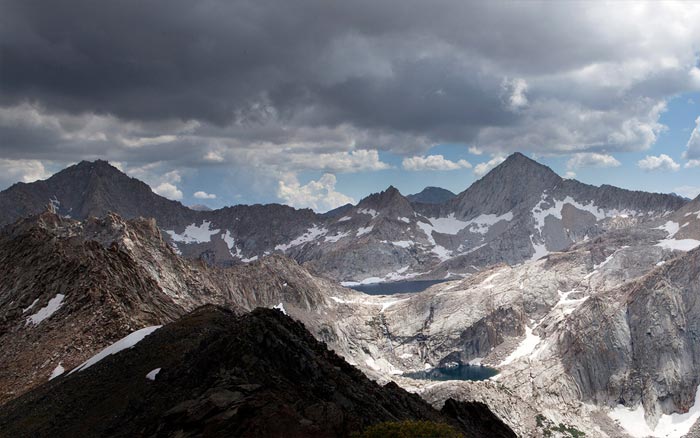Gold in Them Thar Hills
It looked as if nothing could stop a Canadian mining company from reopening an abandoned gold mine adjacent to Yellowstone National Park, threatening three major watersheds with acid-laced pollution. But Earthjustice had a better idea. Staff attorney Doug Honnold explains.

It looked as if nothing could stop a Canadian mining company from reopening an abandoned gold mine adjacent to Yellowstone National Park, threatening three major watersheds with acid-laced pollution. But Earthjustice had a better idea. Doug Honnold, who worked at Earthjustice from 1992–2014 and was managing attorney of the Northern Rockies and California regional offices, explained.
If any single law has been responsible for more environmental damage in the West than any other, a strong case can be made for the General Mining Law of 1872. That hoary statute allows anyone who can find a deposit of gold, silver, copper, or another “hard-rock” mineral (not coal or natural gas) on or under a national forest or a plot of Bureau of Land Management land (not including wilderness areas) to file a claim. If the claim proves out, he (or she, of course) can purchase the land free and clear from the government for $2.50 or $5 an acre depending on the kind of deposit. The claimer is then free to mine the land, or sell it to a developer for a resort, whatever he or she wants to do. There are something like a half-million abandoned mines scattered across the West and Alaska, dribbling acid-laced runoff into streams and wetlands, and countless efforts to overhaul the law have failed.
Several of these mines sit in a high-elevation valley above Cooke City, Montana, just outside Yellowstone National Park. Mining flourished there in the 1870s and played out in the 1950s. After that the mines sat idle, staining three different watersheds with garish orange, acid-tainted water that found its way into Yellowstone National Park, the Absaroka-Beartooth Wilderness, and the Clark Fork Wild and Scenic River.
Then, in the late 1980s, the Canadian mining giant Noranda quietly bought up most of the claims and announced that it planned to develop a massive mine using a technique that involves spraying liquid cyanide on piles of crushed ore. The gold dissolves in the poisonous brew, then is separated out. The toxic sludge would be kept in a gigantic open pit on an earthquake fault in an avalanche chute at the mine site. The tailings pond would cover an area equal to 70 football fields and be contained by an earthen dam 100 feet tall.
No one liked the idea. The Park Service, fearing for Yellowstone, was horrified. Lovers of the park were likewise adamantly opposed to the mine. But the 1872 law had been used again and again to promote virtually unregulated mining. Noranda needed to obtain a few permits, but no one could figure a way to justify denying those permits.
Prompted by Andy Andrews, who was then on the board of the Greater Yellowstone Coalition and now serves on the Earthjustice board and Ed Lewis, another current Earthjustice board member who was then the executive director of GYC, we, hatched the idea of seeking to hold Noranda liable for the current damage being caused by the mine. The Clean Water Act requires that people or companies that discharge pollutants into waterways apply for and obtain permits from the pertinent state agency. Noranda had no such permits. The discharges, under this theory, were illegal and subject to penalties if the company were found liable. Such liability, if established, could conceivably amount to a great deal of money and might make the company change its plans for a new mine.
We filed suit on behalf Cooke City residents who had formed the Beartooth Alliance, plus the Greater Yellowstone Coalition, and several other regional and national organizations. Noranda tried to argue that the pollution entering the streams was quite natural and not its responsibility. It also agreed to abandon the cyanide technology and the huge sludge pond.
By this time, the mine had become a major national — even international — issue. The New York Times editorialized repeatedly against it. A delegation from the World Heritage Committee — an organization affiliated with the United Nations — visited to investigate reports that one of its sites — Yellowstone National Park — was threatened. Even Bill Clinton was pulled into the fray with requests that he protect any unclaimed land that still existed near the old mine.
The judge considered the arguments and the scientific expert witness testimony and ruled that Noranda was indeed liable for the continuing damage. By a formula decreed by the Clean Water Act, we calculated that the company could be on the hook for well over one hundred fifty million dollars. We hoped this would get Noranda’s attention.
It did. It took months of hard bargaining, but on August 12, 1996, as the Republicans convened to nominate Bob Dole to try to unseat Clinton, the President, the First Lady, and Chelsea flew to the Lamar Valley inside Yellowstone Park to celebrate with several hundred key players an agreement among Earthjustice and its clients, Noranda, and the federal government, whereby Noranda would abandon its effort to open the mine and would convey the claims back to the federal government. In return, the feds would pay the company $65 million, partly to reimburse it for its investment in the venture and partly to begin the long and difficult clean-up of the site.
The news stories ran on front pages across the country and were featured on television and radio broadcasts as well. None of them mentioned the lawsuit, but without the suit, there would be a gigantic mine operating right above Yellowstone, a disaster just waiting to happen.